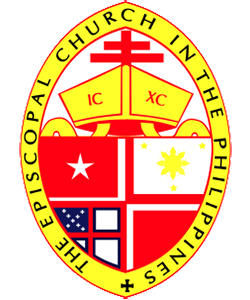Related Research Articles
A bishop is an ordained member of the clergy who is entrusted with a position of authority and oversight in a religious institution. In Christianity, bishops are normally responsible for the governance and administration of dioceses. The role or office of the bishop is called episcopacy. Organizationally, several Christian denominations utilize ecclesiastical structures that call for the position of bishops, while other denominations have dispensed with this office, seeing it as a symbol of power. Bishops have also exercised political authority within their dioceses.
A pastor is the leader of a Christian congregation who also gives advice and counsel to people from the community or congregation. In Lutheranism, Catholicism, Eastern Orthodoxy, Oriental Orthodoxy and Anglicanism, pastors are always ordained. In Methodism, pastors may be either licensed or ordained.
A Christian mission is an organized effort to carry on evangelism or other activities, such as educational or hospital work, in the name of the Christian faith. Missions involve sending individuals and groups across boundaries, most commonly geographical boundaries. Sometimes individuals are sent and are called missionaries, and historically may have been based in mission stations. When groups are sent, they are often called mission teams and they undertake mission trips. There are a few different kinds of mission trips: short-term, long-term, relational and those that simply help people in need. Some people choose to dedicate their whole lives to mission.

Christians in Bangladesh account for 0.30% of the nation's population as of 2022 census. Together with Judaism and Buddhism, they account for 1% of the population. Islam accounts for 91.04% of the country's religion, followed by Hinduism at 7.95% as per 2022 census.

Victory Christian Fellowship of the Philippines, Inc., commonly known as Victory, is an evangelical multi-site church based in Taguig, Philippines. It is a member of Every Nation Churches.

The Episcopal Church in the Philippines is a province of the Anglican Communion comprising the country of the Philippines. It was established by the Episcopal Church of the United States in 1901 by American missionaries led by Charles Henry Brent, who served as the first resident bishop, when the Philippines was opened to Protestant American missionaries. It became an autonomous province of the Anglican Communion on May 1, 1990.
Protestants in India are a minority and a sub-section of Christians in India and also to a certain extent the Christians in Pakistan before the Partition of India, that adhere to some or all of the doctrines of Protestantism. Protestants in India are a small minority in a predominantly Hindu majority country, but form majorities in the north-eastern states of Meghalaya, Mizoram and Nagaland and significant minorities in Konkan division, Bengal, Kerala and Tamil Nadu, with various communities in east coast and northern states. Protestants today trace their heritage back to the Protestant reformation of the 16th century. There are an estimated 20 million Protestants and 16 million Pentecostals in India.

Christianity is a minority religion in Sri Lanka. It was introduced to the island in first century. Traditionally, after Thomas the Apostle's visit in Kerala in AD 52, Christianity is said to have been introduced to Sri Lanka because of its close geographical and commercial ties.

The Church of the Province of Myanmar in Asia is a member church of the Anglican Communion. The province comprises the entire country of Myanmar. The current archbishop of Myanmar and bishop of Yangon is Stephen Than Myint Oo.

Christianity has been in Hong Kong since 1841 when British Empire started to rule Hong Kong.

The Diocese of Medak is one of the prominent Dioceses in the Church of South India, a Protestant Uniting Church with its headquarters in Medak comprising nearly 200 Presbyters ministering to Telugu, Lambadi, Tamil, Kannada, Malayalam, Hindustani, English and other linguistic groups numbering nearly 1/3rds of a million spread over 105 pastorates and administered through 3 District Church Councils (DCC), namely, the Town DCC, the Medak DCC and the Godavari DCC geographically located in the erstwhile civil districts of Adilabad, Nizamabad, Medak, Rangareddy, Hyderabad and Mahboobnagar in Telangana.

Christianity is the largest religion practiced in Zimbabwe, accounted for more than 84% of the population. The arrival of Christianity dates back to the 16th century by Portuguese missionaries such as Fr. Gonsalo Da Silveira of the Roman Catholic Church. Christianity is embraced by the majority of the population. It is estimated 85 percent of Zimbabweans claim to be Christians, with approximately 62 percent regularly attending church services. Christian faith plays a very important role in the organization of Zimbabwean society.

Bishop Vedanayagam Samuel Azariah was an Indian evangelist and the first Indian bishop in the churches of the Anglican Communion, serving as the first bishop of the diocese of Dornakal. A pioneer of Christian ecumenism in India, Azariah had a complex relationship with Mahatma Gandhi, who at least once called him postcolonial Indians' "Enemy Number One."
The East African Revival was a movement of renewal in the Christian Church in East Africa during the late 1920s and 1930s. It began on a hill called Gahini in then Belgian Ruanda-Urundi in 1929, and spread to the eastern mountains of Belgian Congo, Uganda Protectorate, Tanganyika Territory and Kenya Colony during the 1930s and 1940s. The revival reshaped the Anglican Church already present in East Africa and contributed to its significant growth from the 1940s into the 1970s.

Julian M. Dobbs is a New Zealand-born American bishop. He serves as the diocesan bishop of the Anglican Diocese of the Living Word (ADLW), a jurisdiction of the Anglican Church in North America. Dobbs' ministry as a bishop includes overseeing congregations and clergy of the diocese. He became a naturalized citizen of the United States on February 7, 2014.
The Ecclesiastical Province of Lagos is one of the 14 ecclesiastical provinces of the Church of Nigeria. It comprises 13 dioceses:

The Diocese of Churches for the Sake of Others (C4SO) is a non-geographical diocese of the Anglican Church in North America. Formed as a diocese in 2013, C4SO originated as the West Coast church planting initiative in the Anglican Mission in the Americas but today has member churches across the United States. Founded by Todd Hunter, who was a leader in the North American Pentecostal movement before he became Anglican, the C4SO diocese embodies charismatic and "post-evangelical" streams within the Anglican tradition. By attendance and membership, the diocese is one of the largest in the ACNA.

The history of Anglicanism in Sichuan began in 1887 when Anglican missionaries working with the China Inland Mission began to arrive from the United Kingdom. These were later joined by missionaries from the Church Missionary Society and Bible Churchmen's Missionary Society. Or according to Annals of Religion in Mianyang, in 1885, a small mission church was already founded in Mianyang by Alfred Arthur Phillips and Gertrude Emma Wells of the Church Missionary Society. Missionaries built churches, founded schools, and distributed Chinese translations of Anglican religious texts. These efforts were relatively successful and Anglicanism grew to become one of the two largest denominations of Protestant Christianity in the province, alongside Methodism.
References
- ↑ Ruhl, Mike. "Church Planting: A Historical Look. Archived 2014-04-26 at the Wayback Machine " New Harvest (September 2006): n. pag. Centerforusmissions.org. Center for U.S. Missions. Web. 2 December 2013.
- ↑ Neander, Augustus. History of the Planting and Training of the Christian Church by the Apostles. Trans. J. E. Ryland. New York: Sheldon, 1865. Print. pg. 58
- ↑ Neander, Augustus. History of the Planting and Training of the Christian Church by the Apostles. Trans. J. E. Ryland. New York: Sheldon, 1865. Print. pg. 65
- ↑ Neander, Augustus. History of the Planting and Training of the Christian Church by the Apostles. Trans. J. E. Ryland. New York: Sheldon, 1865. Print. pg. 79, 84
- ↑ Holy Bible: New International Version. Grand Rapids, MI: Zondervan, 2005. Print.
- 1 2 McCallum, Dennis. "Planting Home Groups." Planting Home Groups. Xenos Christian Fellowship, 2012. Web. 2 December 2013.
- ↑ How Christianity Rose to Dominate Europe. Worldology. Web. 2 December 2013.
- ↑ Wright, Marcia (2003). "Rev. of The Church Mission Society and World Christianity, 1799-1999 by Kevin Ward". Church History . 72 (3): 679–80. doi:10.1017/s0009640700100721. JSTOR 4146297.
- ↑ Cavalcanti, H.B. (2001). "Human Agency in Mission Work: Missionary Styles and Their Political Consequences". Sociology of Religion . 66 (4): 381–98. doi:10.2307/3712387. JSTOR 3712387.
- ↑ "History of the Church's Expansion into the World." BiblicalTraining.org. Biblical Training. Web. 2 December 2013.
- ↑ Hayward, Kenneth. "God and a Godward Worldview for the IMB - Concerns about CPM Theory". GlobalMissiology.org. January 2016. Retrieved 2 January 2016.
- ↑ Bergquist, Linda; Crane, Michael D. City shaped churches: Planting churches in a global era. Skyforest, California. ISBN 978-0-9989177-8-8. OCLC 1082523333.
- ↑ "The revival of the See of Islington". Diocese of London. 1 May 2015. Retrieved 8 September 2015.
- 1 2 Gledhill, Ruth (9 July 2015). "New church plant bishop will be Rev Ric Thorpe". Christian Today. Retrieved 6 September 2015.
- ↑ Davies, Madeleine. "HTB planters seek to bless the west". churchtimes.co.uk. Retrieved 4 March 2019.
- ↑ Chester, Tim (2000). Church Planting: A Theological Perspective. Ross Shire: Christian Focus Publications. p. 35.
- ↑ "Church Planting Tutorial." Church Planting Tutorial. Church Planting Solutions, 2005. Web. 20 November 2013.
- ↑ Church Planting for Greater Harvest (Regal, Glendale: 1991) 5
- ↑ Ott, Craig, and Gene Wilson. Global Church Planting: Biblical Principles and Best Practices for Multiplication. Grand Rapids, MI: Baker Academic, 2011. Print. pg. 20
- ↑ 'An Unholy Row' four corners, transcript: http://www.abc.net.au/4corners/s141770.htm Archived 23 April 2015 at the Wayback Machine
- ↑ Global Anglican Future – Holy Land 2008 – GAFCON Final Statement
- ↑ Van Rheenen, Gailyn. "Essential Mission Tasks : The Missiology Homepage." Missions: Biblical Foundations & Contemporary Strategies. Grand Rapids: Zondervan, 1996. N. pag. The Missiology Homepage RSS. Web. 2 December 2013.
- 1 2 Forlines, James (2005). "Our Goal: Church Planting Movements". One Magazine. National Association of Free Will Baptists . Retrieved 27 October 2011.
- ↑ "Church Planting Movements". International Mission Board. 2002. Archived from the original on 7 November 2011. Retrieved 27 October 2011.
- ↑ Fanning, Don (1 January 2009). "Church Planting Movements". The Center for Global Ministries . Retrieved 27 October 2011.
- ↑ Kooistra, Paul. "Toward a Definition of Church-Planting Movements" (PDF). Mission to the World. Presbyterian Church in America . Retrieved 27 October 2011.[ permanent dead link ]
- ↑ Weber, Jeremy (9 July 2009). "Cuba for Christ—Ahora!". Christianity Today . Retrieved 27 October 2011.
The Communist island's improbable revival is 15 years old and growing stronger.
- 1 2 3 4 Haney, Jim (1 March 2011). "Assessing Church Planting Movements". Mission Frontiers. U.S. Center for World Mission . Retrieved 27 October 2011.
- ↑ Garrison, David (1 May 2010). "What Are Church Planting Movements?". Church Planting Movements. Retrieved 27 October 2011.
- ↑ Anatomy of a Church Planting Movement quote: The movement does not need a board; it needs a group of leaders of leaders to form an "apostolic team." This is the team that becomes the leaders of leaders. Instead of the movement depending on the passion of a leader of leaders, a core group of passionate vision casters of the movement's DNA are scattered about so that every plant is visited annually. This is the primary way to deal with the loss of the movement's founder.
- ↑ Butler, Robby. Church Planting Movements from One Indian Perspective
- ↑ Smith, Steve and Kai, Ying. "T4T: A Discipleship ReRevolution" (Monument, CO: WIGTake Resources, 2011) p36
- ↑ Garrison, David Church Planting Movements vs Insider Movements: Missiological Realities vs Mythiological Speculations in Proceedings of the ISFM 2004 Meeting: Insider Movements
- ↑ Pratt, Zane (July 2015). "Obedience-Based Discipleship". Global Missiology English. 4 (12). Retrieved 1 February 2017. (Vietnamese Version / Tiếng Việt: "Môn Đồ Hóa Dựa Trên Sự Vâng Phục / OBD". christcenteredresourcesasia.wordpress.com. 25 January 2017. Retrieved 1 February 2017.)